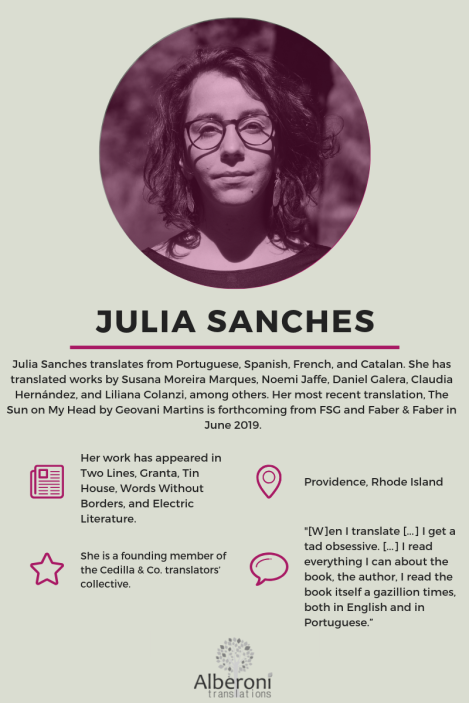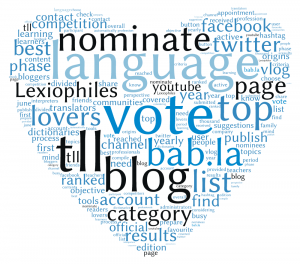Welcome back to our guest post series, dear readers!
I hope your August is going well so far. Remember it’s Women in Translation month and help support the campaign and spread the word about it. For more information, follow the hashtag #WiTmonth on Twitter. And stay tuned, because my post this month (to be published on the 20th) will be special about it.
Now, let’s welcome this month’s guest, Tanya Quintieri, who is a partner of my monthly newsletter and whom I had the pleasure of meeting back in May this year, during the BP19 Conference, in Bologna, Italy.
Welcome, Tanya!

Image provided by the author
Mrs. Divi about writing website copy
First, let me thank you for clicking the link to this post. It means a lot to me to be featured on Caroline’s blog. After all, we read all the big names here and I am honored to join their ranks.
Aside from being a translator (since 2002 — gosh, now I feel old), I am also a web designer and my background is in marketing. In fact, back in 2010, one of my first freelance spinoffs was a consulting agency for social media marketing. Our clients were businesses looking to harness the benefits of social media.
Fastforward to today, I coach my web design clients in writing compelling copy for their websites. I hear you… Why not just hire a copywriter? Well, truth is, most already have perfect copy. They just need a little help adapting it for their websites. As a medium, websites work differently from paper (brochures, social media profiles, etc.). One aspect is SEO. But to me, and this is far more important, focusing on UX is decisive.
But what is UX?
Well, it stands for ‘user interface’. Some even call it ‘user experience’. And that’s the term I’d like to stick to now.
To be found on Google is a noble goal. But doing business online is about more than just being found. Just because someone lands on your website doesn’t mean that they will actually buy from you. I always smile when clients come to me and say: The goal for my website is to land on page one of a Google search when people search for my keywords. To be honest, if you know what you’re doing in SEO, that is the easier part. Actually, converting those website visits is the holy grail. And it’s hard.
Converting visitors with the power of copywriting
Your ultimate goal is to guide your visitors from that first moment they land on your website. Be it through a Google search or by clicking a link to your blog post.
For the latter, it might seem reasonable to ask your visitors for a comment. But that won’t pay your rent. And if your content is worth commenting (i. e. their time), then they will comment or share anyway, even without you asking them to do so explicitly.
For the former, it’s pretty much evident that you won’t turn them into a customer or client after the first visit. Provided they are not pressed for time and their options are thus limited.
What you will want to achieve is the possibility to nurture them as leads. Ask them to sign up to your email list. Offer a freebie that solves their most pressing problem. Get them to book a call with you.
Writing your copy cleverly, with that user experience in mind, you are more likely to gain their attention in the long run. A clever marketing pro once said that a conversion bases on “know, like, trust”. Which is why it usually takes seven touch points for your potential clients or customers to buy from you.
Again, guide your website visitors. From your Home page to your Services/Product page. From your Blog page to your Resources page. From your About page to your Subscribe/Buy page.
“Do this or that” won’t cut it here. Ask questions. Engage your visitors. Rather than saying “Subscribe to my newsletter”, ask them “Are you ready to up your game in Spain?”
Writing copy for a translator’s website
Assuming that your website is up there to attract direct clients (because we all know that agencies have their own onboarding procedures and ask for CVs), focus on how you can make their lives easier. Envision the person looking for what you have to offer. Don’t dwell on diplomas and CAT tools. Explain how your offering saves them time (and thus cash), state that you are responsive, ensure them that you know their business sector (if you are specialized), take away their pain. No direct client wants to see your CV in more words when they come to your website. They want to know how you can make their lives easier.
Learn about writing copy for your website page by page
I’ve coached many of my own web design clients on writing the copy for their websites. Many of them are, in fact, on page one in Google’s search results for their respective keywords. But I also make sure that their success in digital marketing doesn’t stop there. In my course Website Copywriting 101, I explain the purpose of each page on your website, how to write copy for the body and the meta data, what kind of CTAs (Calls to Action) they need, and how to harness the power of copywriting for their onpage SEO.
You can find out more about the course at Website Copywriting 101. If you subscribe to Caroline’s newsletter, you can get a 25% discount.
Aren’t you a subscriber of my monthly newsletter yet? Then subscribe now to have access to exclusive discounts and draws, and be kept in the loop of what is happening in the translation/interpreting market.
About the author
 Tanya Quintieri is a ProZ Community awarded mentor and German/English translator based in the Czech Republic. She’s the initiator of the 1,000,000 Miles Challenge, the Be The Change initiative, contributing member of The Language Mastermind and The Translation Mastermind, and a mother to three beautiful children. She loves Corsica and Salsa, dislikes online bullies and low quality food, and enjoys networking both online and offline. For more information about her, visit her website.
Tanya Quintieri is a ProZ Community awarded mentor and German/English translator based in the Czech Republic. She’s the initiator of the 1,000,000 Miles Challenge, the Be The Change initiative, contributing member of The Language Mastermind and The Translation Mastermind, and a mother to three beautiful children. She loves Corsica and Salsa, dislikes online bullies and low quality food, and enjoys networking both online and offline. For more information about her, visit her website.





